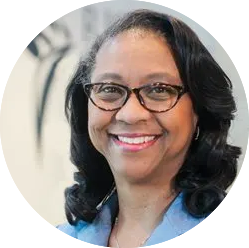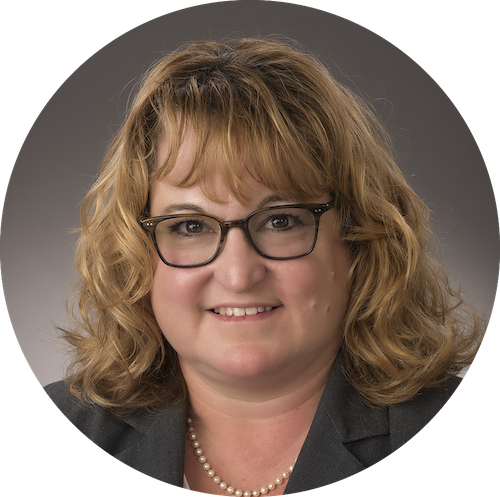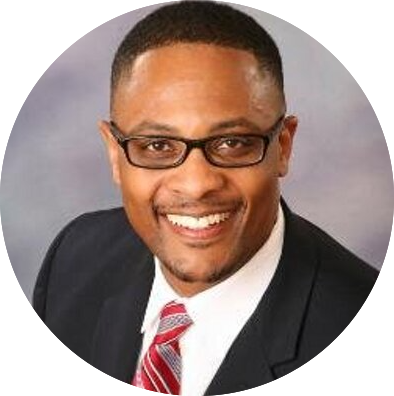
Hosted by 13 school districts from across Western Pennsylvania, this convening was unlike any other in that it provided attendees with opportunities to participate in two full days of school site visits, exposing participants to a range of innovative approaches in diverse educational settings and communities.
Leaders from around the country witnessed new and creative practices firsthand and identified specific models that they could take back to their own districts.
Following the convening, we sat down with three League leaders to understand the specific approaches that have stuck with them from their time in Western Pennsylvania, as well as their vision for potentially implementing those practices in their own communities.

Helen Grant
Chief Family and Community Engagement Officer
Richland School District Two, South Carolina
District Enrollment: 29,000 students
District Type: Suburban
League Member Since: 2017
For Helen Grant, chief family and community engagement officer for Richland School District Two in Columbia, South Carolina, the key innovative approach that stuck with her from the school visits was the four-day instructional work week California Area School District had implemented to help with teacher recruitment and retention.
“It’s not really a four-day work week, it’s a five-day work week, but one day of the week, teachers have planning all day and they can work on campus, they can work from home, they can work from wherever they want to work from, but they have a full day of planning,” she explained.
This innovative school-day model was new to her, but she could immediately see the potential benefits to educator well-being and retention, and it was the first thing she shared with her superintendent when she got back home.
“The idea of it is very much intriguing because nationwide, there’s a shortage of teachers, and we feel that in our district. We’re a large district, 29,000 students with 41 schools and sites, and so…when we start to get to [the spring]…until school opens again, our administrators try to find qualified personnel to be in the classroom,” she explained. “Anything we can do to retain teachers is going to help in the long run because unfortunately, the pipeline is not growing at a fast enough rate to keep up with the needs of students in our country, and certainly not in our state and in our district,” she said.
Grant is already considering how she might start with a small pilot program in one of her schools of similar size to see if it could work for her district too. Grant is interested in checking back in with California Area School District in a year after they’ve had some time to see if the four-day instructional work week model is working for them.
“One of the beauties of being a part of the League is the easy access to information. Everyone is friendly and open, and you understand that when you go to a convening like this, it’s not just for you, it’s for how other people can learn from you and grow too,” she said. “The League makes available representatives from districts on a regular basis, so that if you have further questions, you could find somebody and ask them about it—that makes a difference.”

Holly Edds
Superintendent
Orcutt Union School District, California
District Enrollment: 4,500 students
District Type: Suburban
League Member Since: 2024
For Dr. Holly Edds, superintendent for the Orcutt Union School District in northern Santa Barbara County in California, The school site visits hands down were amazing just to see in action some of these tools and strategies and approaches, and to be able to relate what we’re doing in our district to help us level up our practices,” she said.
Edds attended the convening with her district’s executive director of technology and education services and executive director of curriculum instruction. The three of them split up and went to 11 of the 13 school site visits and came back with a ton of actionable ideas and resources they are eager to bring to their district. Chief among them was the idea of keeping a clear, intentional laser focus on the kinds of skills and dispositions they want to foster in students to build their capacity as lifelong learners.
“What we’re looking at in our district is the Portrait of a Learner and identifying those skill sets that we want our students at each grade to master, not just the academic side but socially and how they’re going to interact with each other. What are our expectations for work habits? What are our expectations for how they’re going to be a successful learner and a successful student?” she said.
They saw multiple examples of how various school sites were doing this in Western Pennsylvania and it gave them ideas of where they can push their thinking and make improvements in their own district, not just for students, but at all levels of their school ecosystem.
“We’re talking about even leveraging [Portrait of a Learner] through an organizational lens of what are our expectations and our collective commitments to each other in this work up,” Edds shared. “What’s the Portrait of a Family and our expectations about how a family can work to support their student in the school setting? What’s the portrait of a leader? What does a leader look like in our district? What does a teacher look like in our district? It’s taking what we saw, looking at what our needs are, matching it and then leveling it up across the board.”

Andre Spencer
Superintendent
Teaneck Public Schools, New Jersey
District Enrollment: 3,600 students
District Type: Urban
League Member Since: 2024
For Dr. Andre Spencer, superintendent of Teaneck Public Schools in New Jersey, what struck him about the South Allegheny School District in Pittsburgh was the close collaboration between the schools, cities, and businesses working jointly to prepare students to join the workforce. He noted that the district worked with local technical schools and businesses to build out robust credentialing and career technical education pathways because they knew that a significant number of their students were going directly into the workforce after graduating.
“In Teaneck, many of our kids do go to college, but we have about 20% who do not. [Pittsburgh got me thinking about] how we might forge an alliance to create a triangle effect—so that young people can work with us, work with this technical school to earn their credentialing, and work with a business with the anticipation that when they graduate, they could transition directly into the workforce at that prospective business. That was a huge learning point for me,” he said.
At Baldwin-Whitehall School District, Spencer observed first-hand how the district builds a pipeline of opportunities to develop lifelong skills for all learners. He saw how the district integrated hands-on learning experiences for special education students to help prepare them with skills that would serve them in life beyond school. With his district back home having a 27% special education population—about 10% more than the national average—this was particularly salient for him.
“[Baldwin-Whitehall] created a space for their young people who were receiving special education services to be able to learn skills and be prepared for wherever they decide to go in the world. The cafe they had, they could [work there and] sell products and it was also a space where other young people could go. That’s something we are looking to create at our own high school because we think that will be a huge benefit for our students,” Spencer said.
At the end of the day, providing a quality, meaningful educational experience for all students is what keeps Spencer motivated, and the League is an invaluable partner in helping to support that.
“The League has really provided a network that allows for us to be creative. In addition to the innovation, the creativity that comes out of this opportunity is just extraordinary and profound. As superintendents, we don’t always get the chance to think about what we need to do for the future, and the League creates the space for us to do some sensemaking around it…it inspires us and gives us the framework of hope, the framework of thought, the framework of you can create what you need for your district, whatever that is. You can create it and we can be a partner in helping you to create it.”
Are you interested in diving deeper into the work of the League of Innovative Schools?